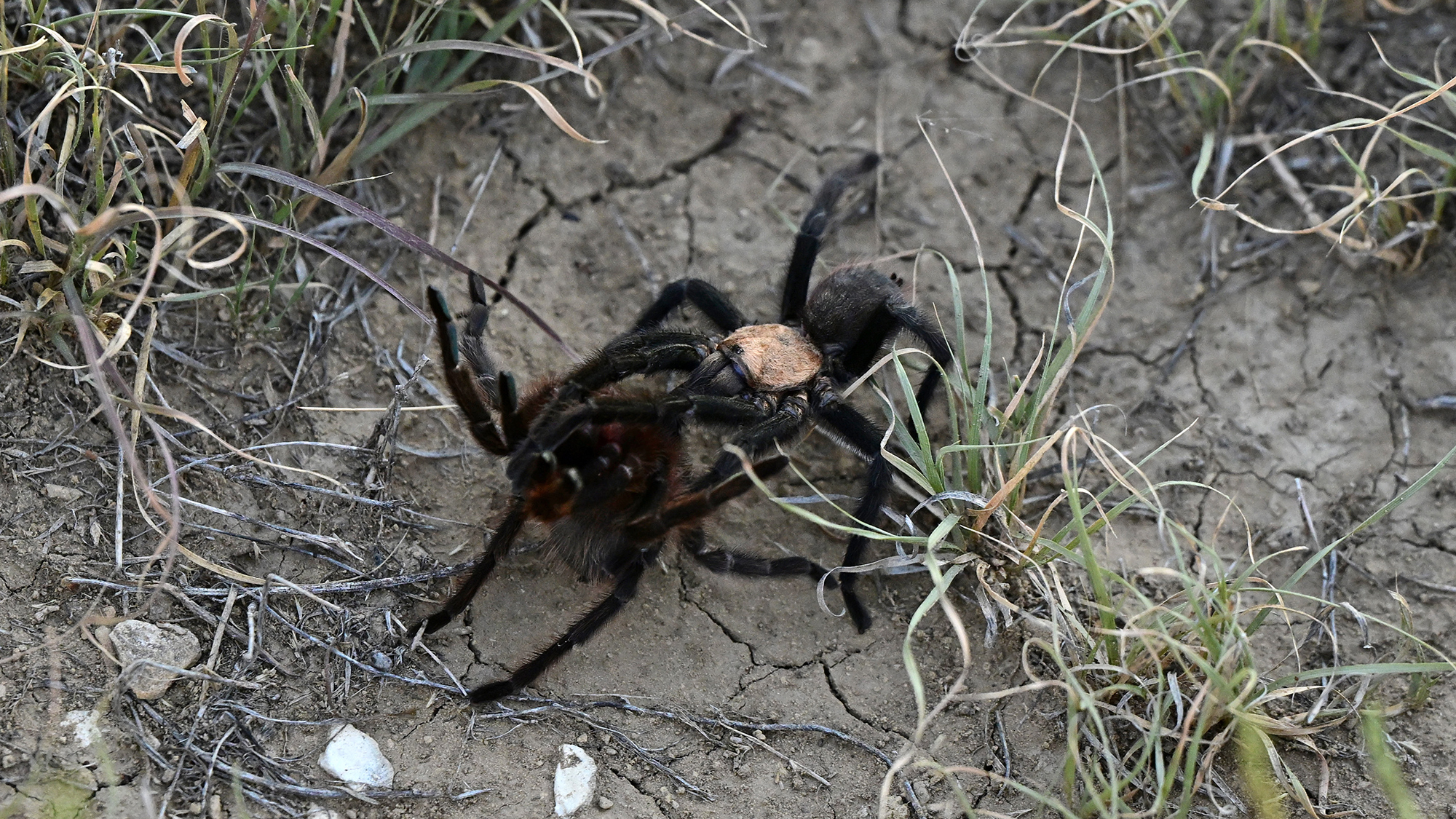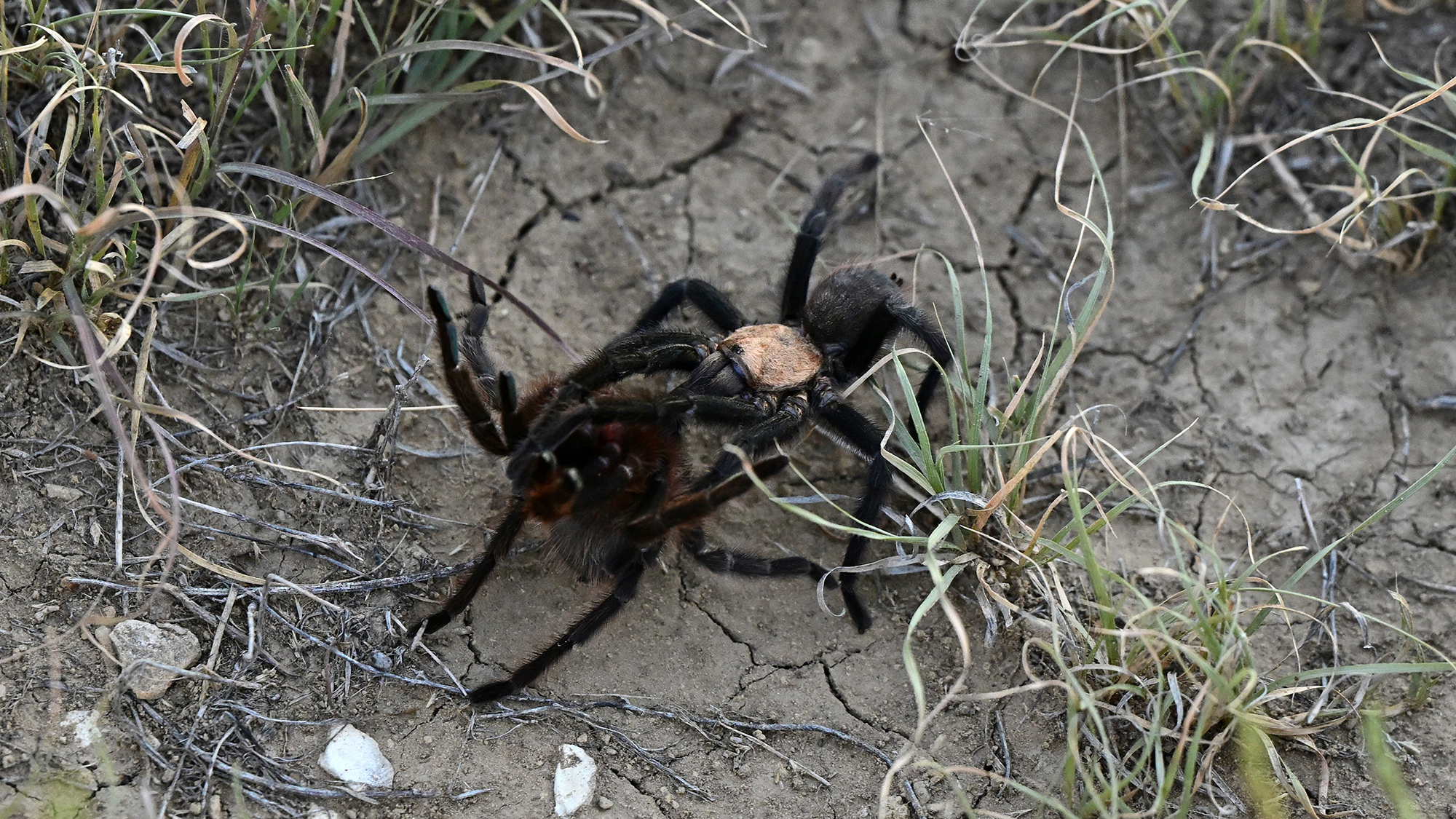
It’s tarantula mating season in Colorado and spider aficionados are traveling from as far away as California to see the annual matchmaking rituals. As Colorado’s public radio news recently detailed, at least one town even threw a party to celebrate the eight-legged arachnids. But amid the festivities, successful mating is often a fatal affair—at least for the males.
Tarantulas often get a bad reputation, but most species are largely harmless to humans and vital to ecosystems such as the expansive prairies of southeastern Colorado. There, common brown tarantulas (technically multiple species within the Aphonopelma genus) spend a large amount of their time in underground burrows. Between September and October, however, the spiders become particularly active near dusk when temperatures begin to cool. At that point, adult male tarantulas emerge and search their surroundings for a mate, even if it might be the last thing they ever do.
It takes roughly seven years for a male to fully mature and grow to around five inches in size. During mating season, the spiders roam for female burrows typically marked using the female’s silk webbing. Once there, the male taps the ground using a pair of head appendages. If interested, the female will leave her home to meet her suitor. But here’s where it can get dicey for her winning choice.
[Related: Newly discovered tarantulas may already be in danger.]
After hooking onto her fangs using his legs, the male mates quickly and then detaches in rapid succession. Many times, however, he’s not fast enough and becomes a postcoital snack for his slightly bigger partner, who needs the nutrients for her pregnancy. This is likely why, as the Associated Press explained on October 3, male spiders typically only live another year or so after reaching sexual maturity. Female tarantulas, on the other hand, can thrive for 20 or more years.
Once they part ways (amicably or not), the female arachnid soon lays as many as 1,000 eggs in a specialized silk hammock within her burrow, which she then carefully guards. Between 30 and 45 days later, the spiderlings hatch and typically spend at least a few days in their parent’s den. After that, however, they disperse to begin their own lives out in the wild.
Speaking with AP, experts explain that while sometimes dangerous for male tarantulas, neither the mom or dad spiders are particularly benign to humans. Generally docile, the arachnids only tend to bite if they feel threatened—when they do, their venom is painful but not lethal, barring a serious allergic reaction. So if you happen to ever see tarantulas on the hunt for mates, it’s best to simply admire them from a distance and let them do their thing. Chances are the males won’t listen to your warnings, anyway.

